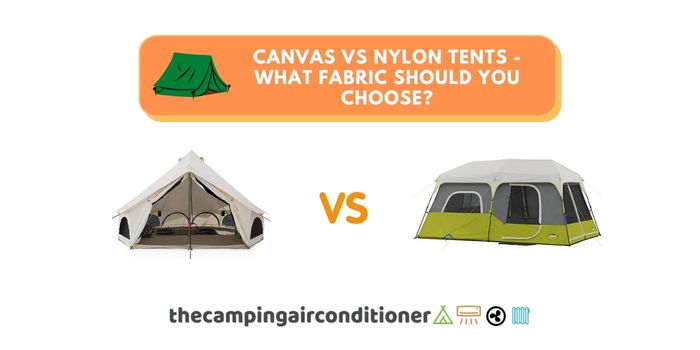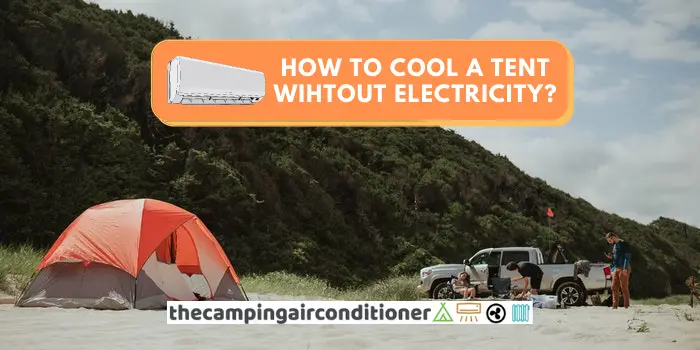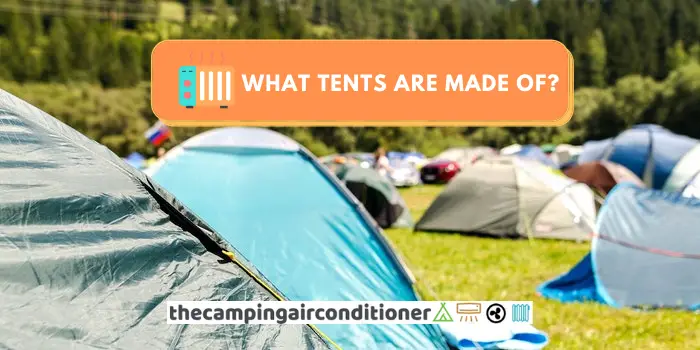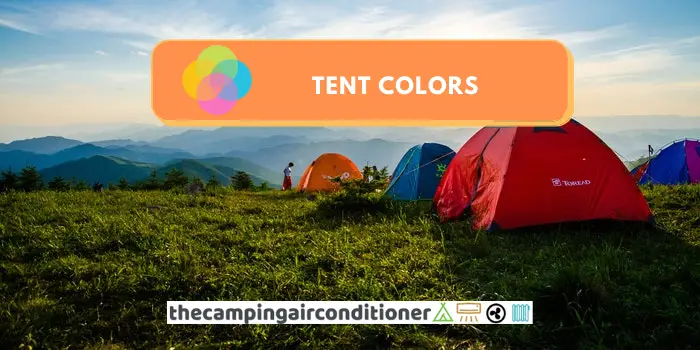The choice of a camping tent might significantly impact the comfort of your getaway trip. You should always be careful when choosing the tent’s shape, size, and fabric.
These days, shelters are manufactured with different materials, such as polyester, DCF, nylon, and canvas. These last two options are probably the most common fabrics in the market, and a natural question arises – which tent fabric should you choose – canvas or nylon?
Well, it depends. Each fabric has advantages and drawbacks, and your final choice will ultimately rely on your needs and preferences.
For example, canvas tents are known for their high breathability, insulation, and thermal comfort, whereas nylon options are lightweight, usually have better waterproofness, and are easier to maintain.
Let’s go through a detailed explanation and the pros and cons of each material.

By the way, The Camping Air Conditioner is sponsored by readers. When you buy through one of our links, we may earn an affiliate commission at no extra cost to you.
What is Canvas? (and what are its pros and cons)
Canvas is a fabric usually made of cotton and linen, which might also contain some parts of polyvinyl chloride (PVC) to enhance its waterproofness.
The fabric is highly recognised for being resistant, sturdy, and has excellent tear strength. Apart from tents, the material is also used to manufacture sails, bags, a wide variety of fashion pieces, equipment covering, and many others.
Canvas tents - Pros and cons
Canvas tents are broadly known for their heavy-duty features and outstanding thermal comfort, providing campers with high insulated environments.
The porous structure of cotton also ensures high breathability and decreases the risks of condensation inside a tent, making it ideal for both summer and winter camping.
Because of all these characteristics and the ability to create a sophisticated design with this fabric (such as a bell shape), this fabric is the number of choice for luxurious shelters and glamping tents, such as the WhiteDuck Avalon Bell Tent (picture below).
Most larger canvas models already come with stove jacks, allowing you to cook inside your tent without concerns or worries about monoxide carbon poisoning. This is especially advantageous during winter camping, where you want to keep warm and cozy while cooking in your portable wood stove.
On the other hand, canvas tend to be less water-resistant than nylon models, and their hydrostatic head is usually not as high as other fabrics (around 1000mm). By the way, you should read this article, if you want to understand further whether your tent is waterproof (and how to make them water-tight).
Also, the fabric robustness comes at a cost – it is heavier than other tent fabrics and usually takes longer to set up. These models might also require extra care and maintenance because they are more prone to mold development, and be more expensive.
The table below summarises our top 5 pros and cons of canvas tents.
- Heavy duty and sturdy
- Excellent Durability
- Excellent insulation
- Luxurious options and appealing design
- Ideal for long term camping
- Expensive
- Higher maintenance
- Develop mold more easily
- Heavier and takes longer to set up
- Waterproofness levels are lower
What is Nylon?
Nylon is a fabric created from a polymerisation reaction of crude oil. Too complex? Yes, we agree. In summary, it is a synthetic material with many variants that have evolved according to industry needs.
Nylon looks like a flexible plastic and can be combined with different chemicals to acquire specific features. Apart from being used in tents, this material is also used in clothing, ropes, army gear, and even by 3-D printers.
Nylon Tents - Pros and Cons
Nylon tents are an excellent alternative for those after lightweight options and pop-up tents. This fabric has a low density, with some variants reaching as low as 1. 15 tons per cubic meter, while canvas weighs around 1.42 tons per cubic meter (nylon is roughly 23% lighter).
Given its weight, nylon models are the preferred models for backpackers, hikers, or campers who need mobility. Another great advantage of this fabric is its price – they are significantly cheaper than canvas tents, with plenty of excellent models costing less than $100.
The ease of set-up and incredible waterproofness also draw the attention of mountaineers professionals, who value these features the most. For example, NatureHike Cloud-Up (picture below) weighs only 3.5lbs and has an outstanding 4000mm waterproof protection, while costing less than $150.
Among the drawbacks, we can highlight:
- the lack of breathability and higher chances of condensation,
- the fabric is not eco-friendly,
- faster deterioration when exposed to UV rays (even though you can use UV sprays to protect them – read more here)
- Lower durability
- Poor insulation
- Cheaper
- Lightweight
- Easy set up
- Compact
- Ideal for backpackers and hikers
- Not eco-friendly
- Poor thermal insulation
- Susceptible to UV rays
- Lower durability
- Low breathability and higher condensation risks
Canvas vs Nylon tents - When to use each?
We have drafted the table below to help you to make your choice for you next tent. Review the features that you required and ensure to pick the fabric that best suit your needs.
| Which fabric should you use? | Canvas | Nylon |
| Glamping | X | |
| Long-Term Camping | X | |
| Backpacking | X | |
| Hiking | X | |
| Cooking inside a tent (w/ stove jack) | X | |
| Rainy weather | X | |
| Ease of set up | X | |
| Budget-Friendly | X | |
| Better Insulation | X | |
| Breathability | X | |
| Easier maintenance | X | |
| Lightweight | X | |
| Eco-friendly | X | |
| UV protection | X |
Editor’s notes:
a) There are affordable canvas tents with quick setup, such as Kodiak Basic Flex-Bow (see below)
b) Do you already own a nylon tent and want to go winter camping? Learn how to insulate your tent with easy and cheap steps in this article.
c) Do not cook inside your tent unless it is equipped with a stove jack – check this article with some of our preferred models.
- 4-season tent with optimal insulation
- Quick and easy set-up
- EXCELLENT Value-for-Money
- Up to 6 campers
Final thoughts
There is no perfect fabric – each material will come with a suite of pros and cons. However, some models suit better certain camping conditions than others.
Overall, our recommendation is:
- For medium and long-term camping – pick a canvas model
- Worried with weather conditions (winter/summer camping) – choose a canvas model
- Does the forecast show rainy conditions? You will not be 100% dry with a canvas model
- Hiking and backpacking? No doubt, pick a nylon option.
- On a budget? Nylon models are much cheaper.







